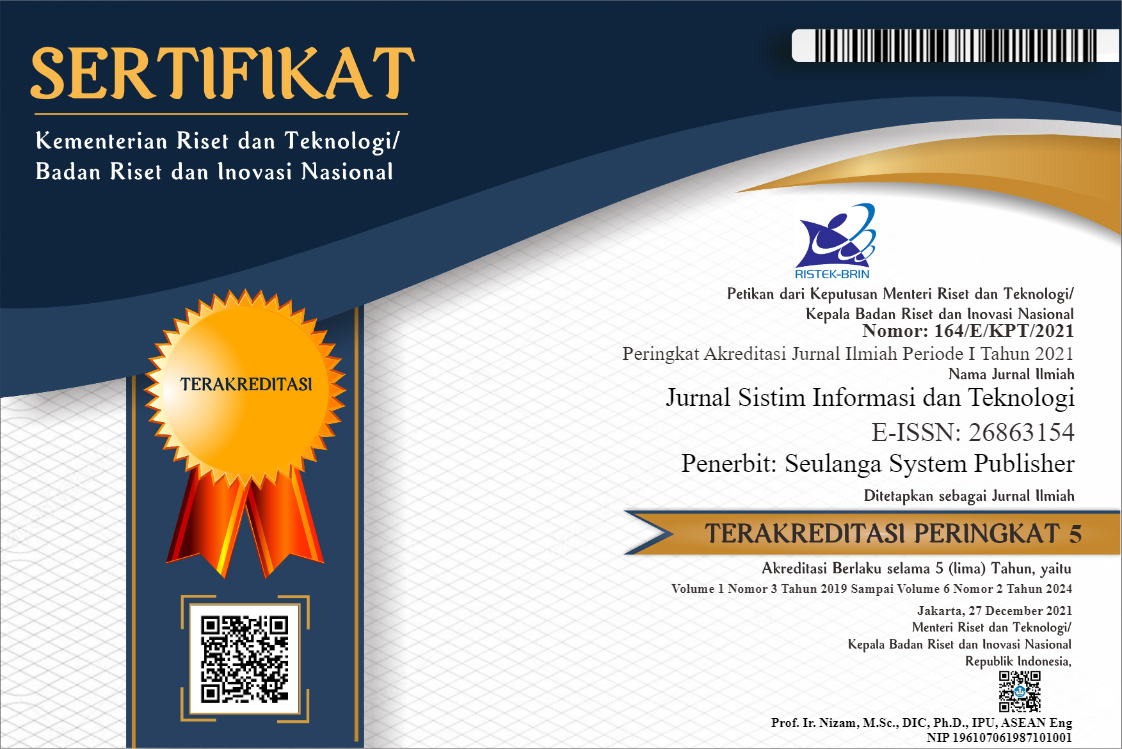Desain dan Simulasi Konverter Tiga Fasa AC – DC pada Pico Hydro
DOI:
https://doi.org/10.37034/jsisfotek.v5i1.194Keywords:
Pico Hydro, Converter, Thyristor, AC-DC, rectifierAbstract
Pico hydropower plant is a generator engaged in the field of renewable energy, in general, the power system uses a 3-phase synchronous generator with AC voltage, in its development it can be used as a converter, by converting AC voltage to DC voltage. One of the uses of DC voltage is as so that it can be used as a battery charger or battery discharger. An AC-DC converter, also known as a rectifier, is a device for converting alternating current (AC) to direct current (DC). In general, many technologies in the industrial world utilize converters. In this paper, a simulation design of an AC-DC converter system will be made with a 230 Volt AC input with a DC voltage output. The manufacture of the converter is carried out with different gate values on the thyristors which are simulated using Simulink in MATLAB. The results of this study are in the form of analysis and mathematical calculations of the output of the AC-DC converter where from the simulation results that AC voltage can be converted to DC voltage with the working principle of the thyristor, thus the converter output results can be used in battery chargers and battery dischargers
References
Bandri, S., Premadi, A., & Andari, R. (2021). Studi Perencanaan Pembangkit Listrik Tenaga Picohydro (PLTPh) Rumah Tangga. Jurnal Sains dan Teknologi, 21(1).
Ibrahim, M., Dirja, I., & Naubnome, V. (2020). Rancang bangun prototipe PLTPh sebagai listrik penerangan kapasitas 9 Watt. Jurnal Energi dan Manufaktur, 13(2), 63-69.
Supena, Deden., Yunus, Riza M., Dewi J, Eidelweis., dan Budiman, Haris(2016). Analisis Sistem Kerja Generator AC (Sinkron).Jurnal Universitas Majalengka.
Khalid, I. Penerapan Kendali Satu Siklus Untuk Memperbaiki Kinerja Konverter AC–DC Satu Fasa Topologi Jembatan Pada Kondisi Baban Berubah-ubah. SMARTek, 4(1).
Pasaribu, A. (2018). Analisi Tegangan keluaran Konverter AC-DC Satu Phasa dengan Beban Lampu Halogen (Doctoral Dissertation)
Kusuma, A. (2016). Analisa Generator 3 Phasa Tipe Magnet Permanen Dengan Penggerak Mula Turbin Angin Propeller 3 Blade Untuk PLTB. Eksergi, 11(1).
Perawati, P. (2020). Karakteristik Generator Sinkron yang Berbeban Berat dan Tidak Konstan. Jurnal Ampere, 2(2), 115-120.
Rivani, R., & Hiendro, A. (2019). Studi Perancangan Dan Analisis Sistem Pengisian Cerdas (Smart Charge) Baterai. Jurnal Teknik Elektro Universitas Tanjungpura, 2(1).
Nasution, M. (2021). Karakteristik Baterai Sebagai Penyimpan Energi Listrik Secara Spesifik. JET (Journal of Electrical Technology), 6(1), 35-40.
Satriady, A., Alamsyah, W., Saad, A. H., & Hidayat, S. (2016). Pengujian Pengaruh Luas Elektroda Terhadap Karakteristik Baterai LiFePO4. Jurnal Material dan Energi Indonesia, 6(02), 43-48.
Gideon, S., & Saragih, K. P. (2019). Analisis karakteristik listrik arus searah dan arus bolak-balik. Ready Star, 2(1), 262-266.
Tarmizi, T. (2010). Desain Sistem Kontrol Sudut Penyalaan ThyristorKomutasi Jaringan Berbasis Mikrokontroler PIC 16F877. Jurnal Rekayasa Elektrika, 9(1), 16-23.
Rashid, M. H., Kumar, N., & Kulkarni, A. (2014). Power Electronics Devices. Circuits and Applications (4th Edition), England.
Hamid, R. M., Rizky, R., Amin, M., & Dharmawan, I. B. (2016). Rancang Bangun Charger Baterai Untuk Kebutuhan UMKM. JTT (Jurnal Teknologi Terpadu), 4(2), 130-136.
King, B. F., Panjaitan, S. D., & Hartoyo, A(2020). Sistem Kontrol Charging dan Discharging Serta Monitoring Kesehatan Baterai. Jurnal Teknik Elektro Universitas Tanjungpura, 1(1).
Firdausyah, A. B., Andromeda, T., & Sudjadi, S. (2020). Perancangan Sistem Discharging Baterai Menggunakan Metode Constant Current Dummy Load (CCDL).
Downloads
Published
How to Cite
Issue
Section
License
Copyright (c) 2022 Jurnal Sistim Informasi dan Teknologi

This work is licensed under a Creative Commons Attribution 4.0 International License.









